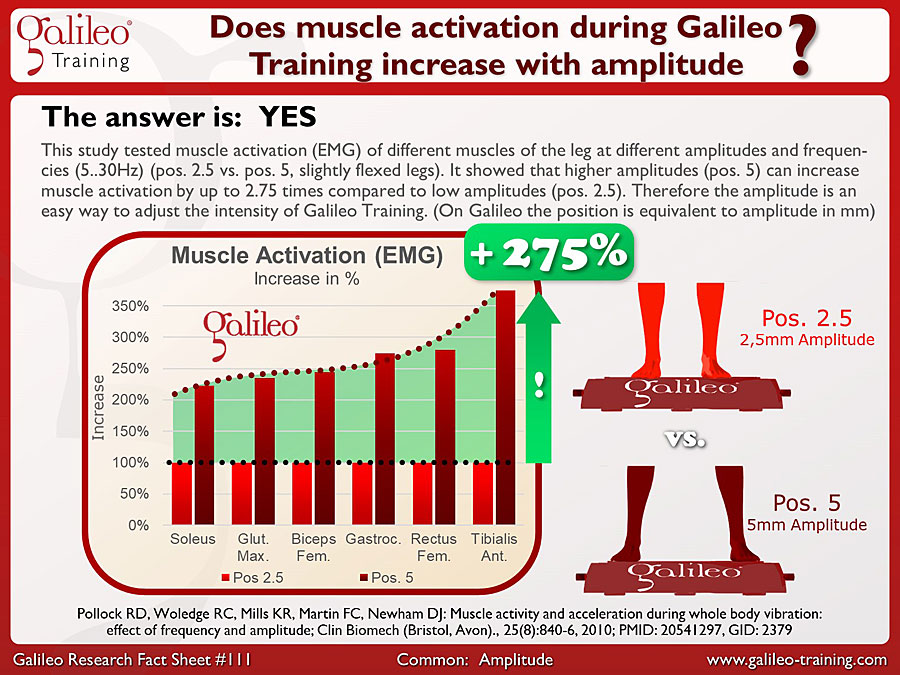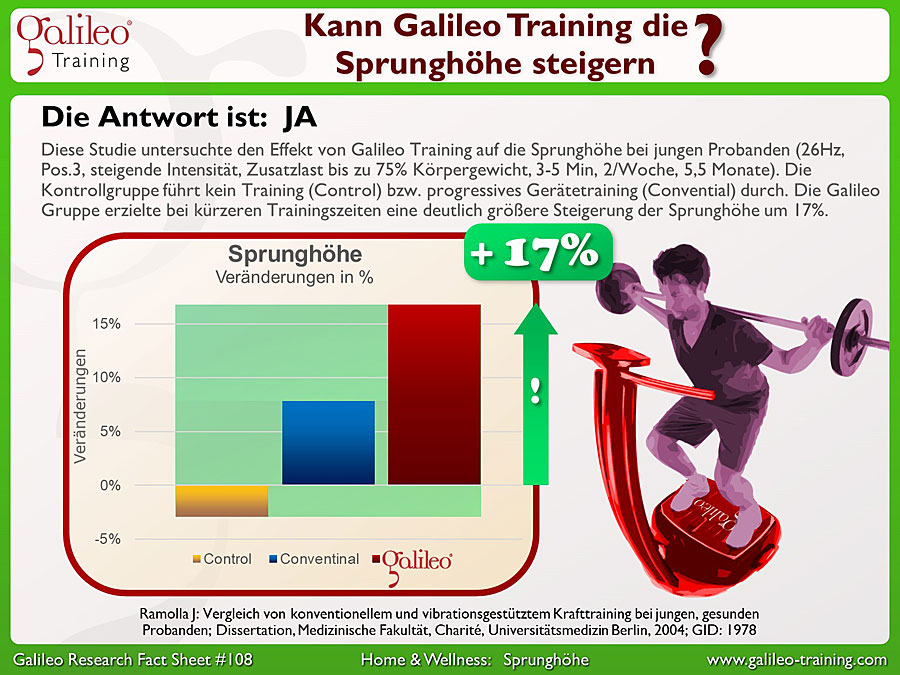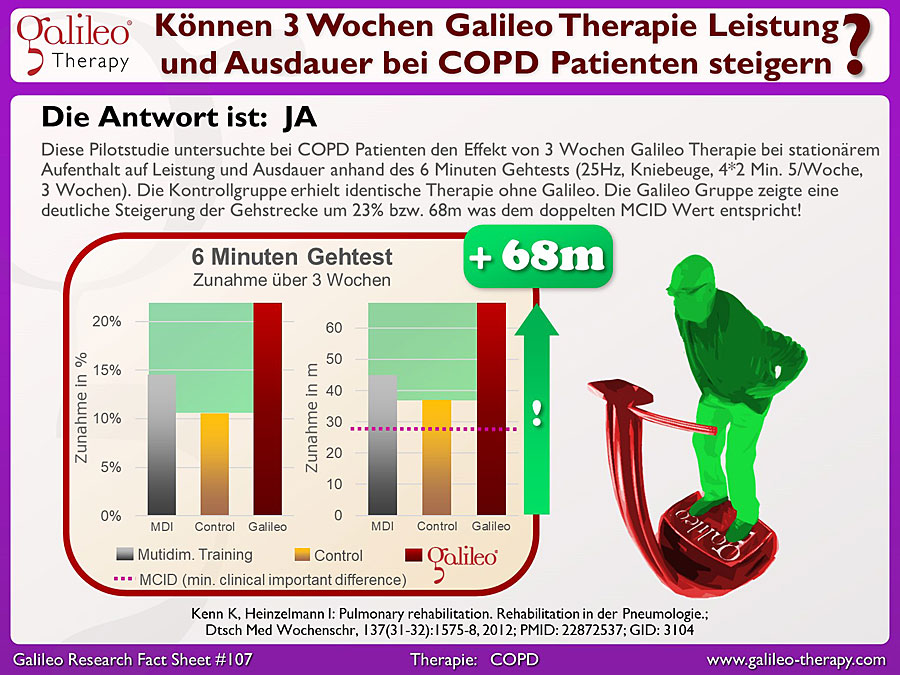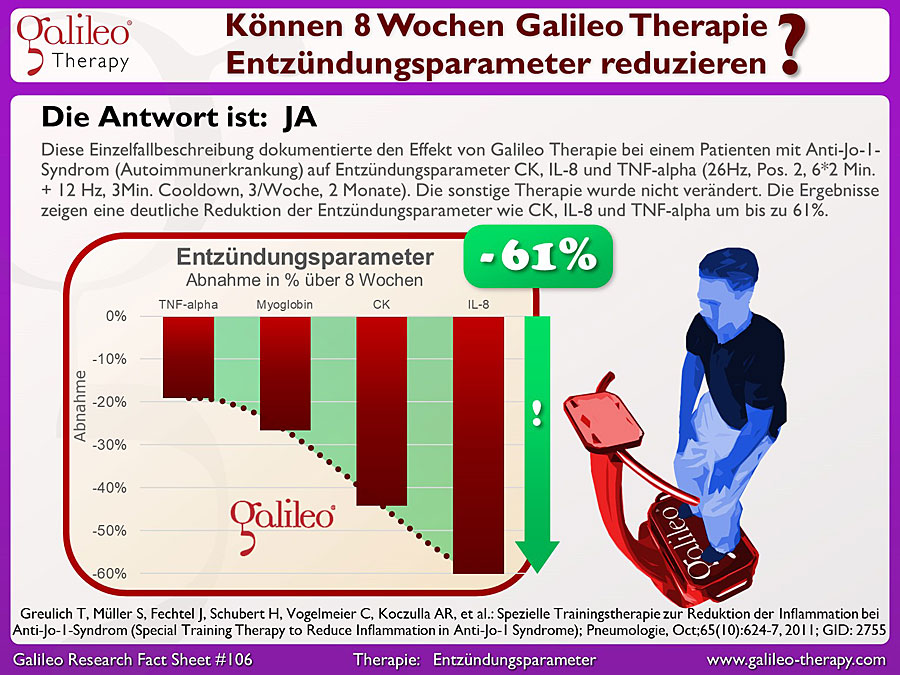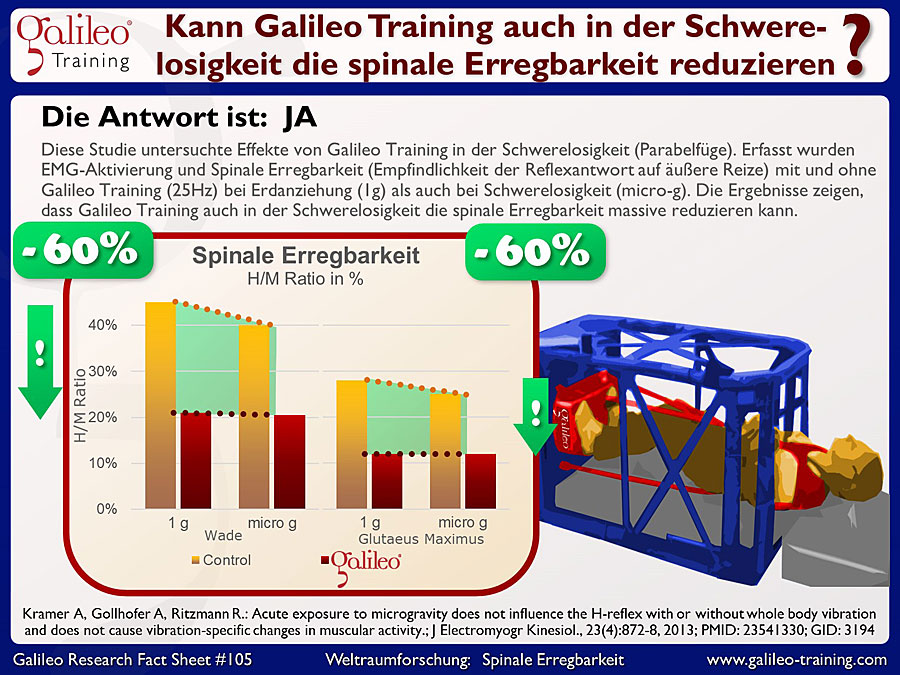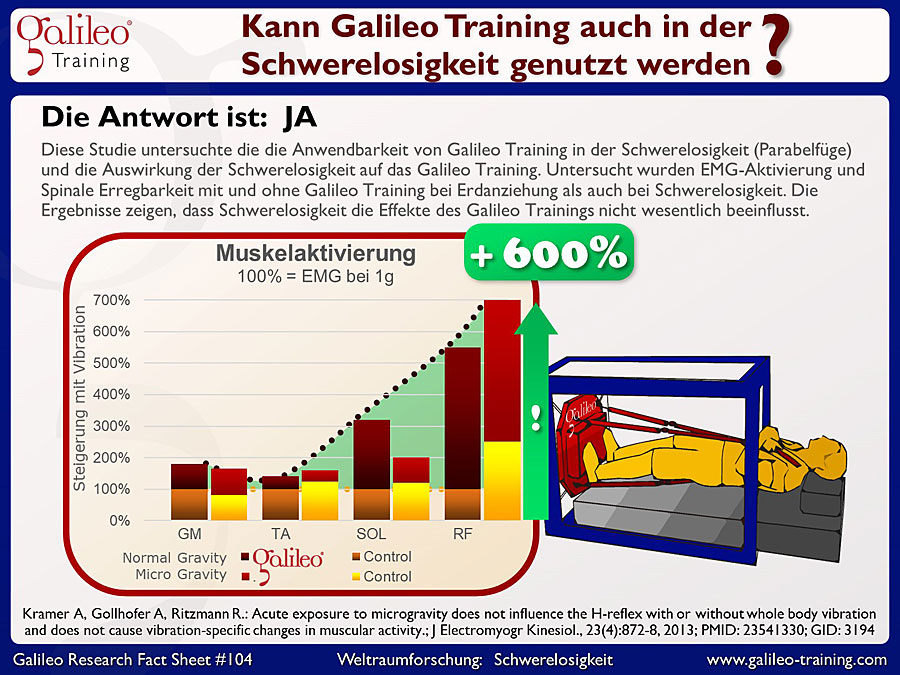This study tested muscle activation (EMG) of different muscles of the leg at different amplitudes and frequen-cies (5..30Hz) (pos. 2.5 vs. pos. 5, slightly flexed legs). It showed that higher amplitudes (pos. 5) can increase muscle activation by up to 2.75 times compared to low amplitudes (pos. 2.5). Therefore the amplitude is an easy way to adjust the intensity of Galileo Training. (On Galileo the position is equivalent to amplitude in mm)...
Galileo Research Facts No. 110: Can Galileo Training at high frequencies increase isokinetic eccentric knee torque?
This study investigated short-term effects of Galileo Training at high frequencies (26Hz & 40Hz) on the max. isokinetic torque at the knee (0Hz, 26Hz (Pos.4), 40Hz (Pos.1.5), 90° knee angle (static), 10x60 s). The control group performed identical exercises without vibration. The Galileo group showed higher isokinetic eccentric knee torque of up to +14% (at 26Hz) which is equivalent to a difference of up to 41% vs. the control group...
Galileo Research Facts No. 109: Can high frequencies increase muscle activation during Galileo Training?
This study tested muscle activation (EMG) of different muscles of the leg at different frequencies between 5 and 30Hz (pos. 5, slightly flexed legs). It showed that high frequencies (25-30Hz) can increase muscle activation by up to 5.5 times compared to low frequencies at 5Hz. Therefore Galileo Training targeting muscle hypertrophy and muscle power should be using high frequencies above 20 Hz to increase muscle activation...
Galileo Research Facts No. 108: Can Galileo Training improve jump height?
This study documented the effects of Galileo Training on jump height in young individuals (26Hz, pos.3, increasing intensity, extra loading up to 75% body weight, 3-5 min, 2/week, 5.5 months). The control groups received no training (control) or conventional strength-training (conventional). Even though the Galileo group had the shorter training session it showed significantly higher results with up to 17% increase of jump height...
Galileo Research Facts No. 107: Can 3 weeks of Galileo Therapy improve power and endurance in COPD patients?
This pilot study examined the effects of 3 weeks of Galileo Therapy on muscle power and endurance measured by 6 minutes walk test in COPD in-patients. (25Hz, squat, 4*2 min. 5/week, 3 weeks). The control group received identical therapy without Galileo. The Galileo group showed a highly significant improvement in the walking distance by 23% or 68m which is equivalent to over two times the MCID...
Galileo Research Facts No. 106: Can 8 weeks of Galileo Therapy decrease inflammation markers?
This case study reported the results of Galileo Therapy in a patient with Anti-Jo-1-Syndrome (auto-immune disease) on inflammation markers like CK, IL-8 and TNF-alpha (26Hz, pos. 2, 6*2 min. + 12 Hz, 3min. cool-down, week, 2 months). Additional therapy was not changed during this time. The results show a significant decrease of the inflammation makers CK, IL-8 and TNF-alpha after 8 weeks by up to 61%...
Galileo Research Facts No. 105: Can Galileo Training decrease Spinal Excitability even in micro-gravity?
This study tested the effects of Galileo Training in micro-gravity conditions (parabolic flights). The muscle activation (EMG) and the Spinal Excitability (sensitivity of reflexes reacting on an external stimulus) was assessed with and without Galileo Training (25Hz) in normal gravity (1g) and micro-gravity (micro g). The results prove that Galileo Training can significantly decrease Spinal Excitability even in micro-gravity...
Galileo Research Facts No. 104: Can Galileo Training be used in space?
This study tested the feasibility of Galileo Training in micro-gravity conditions as well as the effects on Microgravity on Galileo Training effects. The EMG activity was assessed with and without Galileo Training in Combination with normal gravity as well as micro gravity. The results show that the effects of Galileo Training on EMG activation is not significantly altered by micro-gravity and that Galileo is feasible under micro gravity...
Galileo Research Facts No. 103: Can Galileo Therapy improve muscle mass and bone mass in OI patients?
This study documented the effects of Galileo Training in children with OI (Osteogenesis Imperfecta) during the Cologne therapy concept “auf die Beine” on muscle and bone mass (10-20Hz, patient individual exercises, 10*15min./week, 6 months + 6 months follow-up). The results show a growth effect corrected significant increase in muscle mass (legs up to 14%) and bone mass (leg up to 31%)...
Galileo Research Facts No. 102: Can Galileo Therapy improve balance in Fibromyalgia patients?
This study investigates the effects of Galileo Therapy on balance in Fibromyalgia patients (12,5Hz, 6* 30-60sec., 3/week, 12 weeks). Both groups received standard physiotherapy. The control group received no additional therapy. While the control group decreased in many tested parameters of balance ability by up to 20% the Galileo Therapy group improved by up to 47%...
